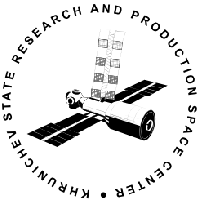Cosmos 1970, 1971 & 1972
Launch Success
Liftoff Time (GMT)
02:00:47
Friday September 16, 1988
Mission Details
Cosmos 1970, 1971 & 1972
The USSR took a long time to realize the importance of positioning systems. After launching the Zaliv and Parouss constellations, similar to the American Transit, the Soviets began the development of a new generation, the GLONASS, to be similar to the new American GPS. The first GLONASS satellite was launched in October 1982, and two more were launched into orbit once it was proven to work properly. Several slightly improved versions were then launched, Block IIA, IIB and IIV. In 1991, the USSR collapses, whereas the constellation finishes its phase I of deployment, composed of 14 satellites. The Soviets are then ahead of the American GPS program. Phase II, with 24 satellites, was reached in 1995. Because of the economic crisis that followed the fall of the USSR, Russia is unable to maintain these 24 satellites in orbit, their replacement is no longer assured. From 1996, GLONASS is no longer operational. In October 2000, there are only 6 functional satellites, out of the 18 necessary. To solve this problem, it was decided to develop GLONASS-M, with an increased life span. The first one is launched in 2003. The GLONASS satellites are positioned on elliptical orbits contained in three orbital planes inclined at 64.8°. To transmit their signal, the GLONASS satellites use a multiplexing FDMA (Frequency Division Multiple Access). The GLONASS satellites have a mass of 1413kg, which will allow them to be placed in orbit in clusters of three. The satellites are built around a cylindrical body, which has a length of 8.2m and a diameter of 1m. With the solar panels deployed, the satellites are 7.3m wide. GLONASS-M are designed around the same systems and subsystems as GLONASS. Their dimensions are the same, but their mass is very slightly increased to 1415kg. But the main advantage of GLONASS-M over their predecessors is their lifetime, seven years. They can be launched into orbit by clusters of three on Proton-M launchers.
Medium Earth Orbit
3 Payloads
4,250 kilograms
Rocket


Manufacturer
KhrunichevRocket
Height: 57.64m
Payload to Orbit
LEO: 19,000 kg
GTO: 2,400 kg
Liftoff Thrust
9,548 Kilonewtons
Fairing
Diameter: 4.35m
Height: 10.4m
Stages
4
Launch Site
Stats
Proton-K
165th
Mission
11th
Mission of 1988
Khrunichev State Research and Production Space Center
2236th
Mission
72nd
Mission of 1988
1988
89th
Orbital launch attempt